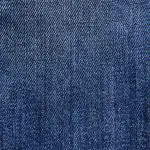Did you know that hemp can decompose in just a few months, while linen often takes over a year? This remarkable difference highlights the varying impacts these fibers have on our environment. As sustainability becomes increasingly important, it’s essential to evaluate which of these natural fibers truly deserves the title of the most eco-friendly option. What factors should we consider when making this comparison?
Table of Contents
Key Takeaways
- Hemp decomposes within months, offering a quicker return to the ecosystem compared to linen’s year-long decomposition.
- Hemp requires 50% less water than linen, making it more suitable for regions with limited water resources.
- Hemp’s resilience reduces reliance on pesticides and fertilizers, while linen often necessitates more chemicals for cultivation.
- Hemp has a longer lifespan due to its strength, whereas linen is prone to fraying and requires more maintenance.
- Hemp’s cultivation improves soil health and prevents erosion, while linen can deplete soil nutrients if not managed properly.
Biodegradability and Environmental Impact
When you consider the biodegradability and environmental impact of hemp and linen, you’ll find that both materials offer sustainable options, but they differ markedly.
Hemp breaks down more quickly in the environment, usually decomposing within a few months. This rapid biodegradability means it leaves a smaller ecological footprint.
Hemp decomposes rapidly within months, resulting in a smaller ecological footprint compared to other fibers.
On the other hand, linen, made from flax fibers, can take over a year to decompose, though it’s still considered eco-friendly.
Hemp also requires less water and fewer pesticides compared to linen, which can help mitigate environmental damage during cultivation.
Ultimately, while both fibers are biodegradable, hemp tends to have a more favorable impact due to its quicker breakdown and lower resource requirements, making it a more sustainable choice for eco-conscious consumers.
Sustainability in Production
When you consider sustainability in production, water usage efficiency plays a key role.
Hemp requires considerably less water compared to linen, making it a more eco-friendly choice.
Additionally, hemp’s natural resilience reduces the need for pesticides and fertilizers, further enhancing its sustainable profile.
Water Usage Efficiency
Hemp stands out as a champion of water usage efficiency compared to linen, requiring considerably less water for cultivation.
While linen needs significant irrigation, hemp thrives on rainfall, making it ideal for regions with limited water resources.
You’ll find that hemp can grow in diverse environments, utilizing about 50% less water than linen throughout its lifecycle.
This characteristic not only supports sustainable farming practices but also helps preserve precious freshwater supplies.
By choosing hemp, you’re opting for a fiber that aligns better with eco-friendly principles and reduces the strain on water systems.
Pesticide and Fertilizer Reduction
Hemp’s advantages extend beyond water efficiency, particularly in its reduced need for pesticides and fertilizers during cultivation.
This fiber crop naturally resists pests and diseases, allowing you to grow it without relying heavily on chemical treatments.
In contrast, linen, derived from flax, often requires more pesticides to combat various agricultural threats, which can negatively impact the environment.
Durability and Longevity
Durability is a key factor when comparing hemp and linen, especially for those seeking long-lasting materials.
Hemp stands out for its incredible strength and resilience. It can withstand wear and tear better than linen, making it an ideal choice for items that see frequent use, like bags and workwear.
On the other hand, linen, while also durable, tends to fray and wrinkle more easily, which can affect its lifespan.
If you’re looking for something that will last through years of use, hemp might be your best bet.
However, if you prefer the luxurious feel of linen, just keep in mind that it may require more care to maintain its quality over time.
Choose wisely based on your needs!
Economic Factors and Market Demand
As you explore the economic factors influencing the market for hemp and linen, it’s clear that both materials are gaining traction due to their sustainability credentials. The demand for eco-friendly products is driving growth in these sectors, but several elements affect their market dynamics:
- Production Costs: Hemp typically has lower production costs than linen, making it more appealing to manufacturers and consumers alike.
- Market Trends: With a growing consumer preference for sustainable materials, hemp’s versatility and linen’s luxury appeal create unique market niches.
- Regulatory Support: Hemp is increasingly supported by favorable regulations, enhancing its market accessibility compared to linen, which can face stricter agricultural restrictions.
Understanding these factors helps you appreciate the economic landscape surrounding these natural fibers.
Carbon Emissions and Soil Conservation
While both hemp and linen contribute to sustainable practices, their impact on carbon emissions and soil conservation varies markedly.
Hemp grows quickly, often requiring fewer pesticides and fertilizers, which helps reduce carbon footprints. Its deep root system also improves soil health by preventing erosion and promoting nutrient cycling. This means you’re not just getting a crop; you’re enhancing the land.
On the other hand, linen, made from flax, also has benefits but doesn’t match hemp’s rapid growth. Flax cultivation can lead to soil depletion if not managed well, impacting long-term sustainability.
In choosing between the two, consider how each fiber contributes to both carbon emissions and the health of our soils for a more sustainable future.
Consumer Preferences for Eco-Friendly Textiles
When you think about eco-friendly textiles, consumer preferences increasingly lean toward materials like hemp and linen due to their sustainable qualities.
These fibers not only reduce environmental impact but also offer versatility in their applications.
Here are three reasons why you might prefer these eco-friendly textiles:
- Biodegradable: Both hemp and linen break down naturally, minimizing landfill waste.
- Low Water Usage: Hemp requires considerably less water to grow compared to conventional cotton, making it a water-efficient choice.
- Durability: Hemp and linen are strong and long-lasting, which means you won’t need to replace your items as often, further reducing your ecological footprint.
Choosing hemp or linen can reflect your commitment to a more sustainable lifestyle.
Applications of Hemp and Linen in Various Industries
Hemp and linen have found their way into a variety of industries, making them not just eco-friendly choices but also practical ones.
Hemp and linen are versatile, eco-friendly materials that seamlessly blend sustainability with practicality across various industries.
In fashion, you can wear stylish hemp and linen clothing that offers durability and breathability.
In home textiles, they’re used for bed linens, curtains, and upholstery, adding a touch of elegance while being sustainable.
The automotive industry is also embracing these fibers for interior components, reducing environmental impact.
Hemp’s strength makes it ideal for construction materials, while linen’s natural properties enhance paper production.
Even in the health sector, you’ll find hemp used in biodegradable packaging and linen in medical textiles.
The Future of Sustainable Fibers
As the demand for eco-friendly products grows, the future of sustainable fibers looks promising.
You’re likely to see innovations that prioritize environmental health and social responsibility. Here are three trends shaping the future:
- Biodegradable Materials: Expect to see more fibers that break down naturally, reducing landfill waste.
- Regenerative Agriculture: Look for fibers sourced from farming practices that restore soil health and biodiversity, like hemp and organic linen.
- Circular Economy: Companies are adopting recycling and upcycling processes, turning waste into new products, thereby minimizing resource extraction.
These advancements not only improve the sustainability of fibers but also align with your values as a conscious consumer.
Embracing these trends can lead to a more responsible and eco-friendly lifestyle.
Frequently Asked Questions
How Do Hemp and Linen Compare in Terms of Comfort?
When you compare hemp and linen for comfort, you’ll find hemp’s softness improves over time, while linen offers a breathable, lightweight feel. Both fibers provide unique comfort, depending on your personal preferences and needs.
Can Hemp and Linen Be Blended With Other Fibers?
Imagine a chef crafting a unique dish; hemp and linen can blend beautifully with other fibers like cotton or silk. This mix enhances durability and comfort, giving you versatile, eco-friendly fabrics for various uses.
What Are the Best Care Practices for Hemp and Linen Fabrics?
To care for hemp and linen fabrics, wash them gently in cold water, avoid bleach, and air dry. Iron on low heat if needed. These practices help maintain their strength and natural beauty for longer.
How Do Hemp and Linen Impact Local Economies?
Hemp and linen can boost local economies by creating jobs in farming, processing, and manufacturing. When you support these industries, you help communities thrive, fostering sustainable practices and increasing economic resilience in your area.
Are There Any Health Benefits Associated With Hemp and Linen Textiles?
Think of ancient warriors wrapped in linen; both hemp and linen textiles offer health benefits. They’re breathable, hypoallergenic, and can reduce skin irritation. You’ll appreciate how these fabrics enhance comfort and well-being in your daily life.
- What Is Polyamide Yarn? a Weaver’s and Knitter’s Guide - June 30, 2025
- The Ultimate Guide to Polyamide Fiber: Properties and Applications - June 30, 2025
- What Is Polyamide Fibre? an In-Depth Look at Its Structure - June 30, 2025




